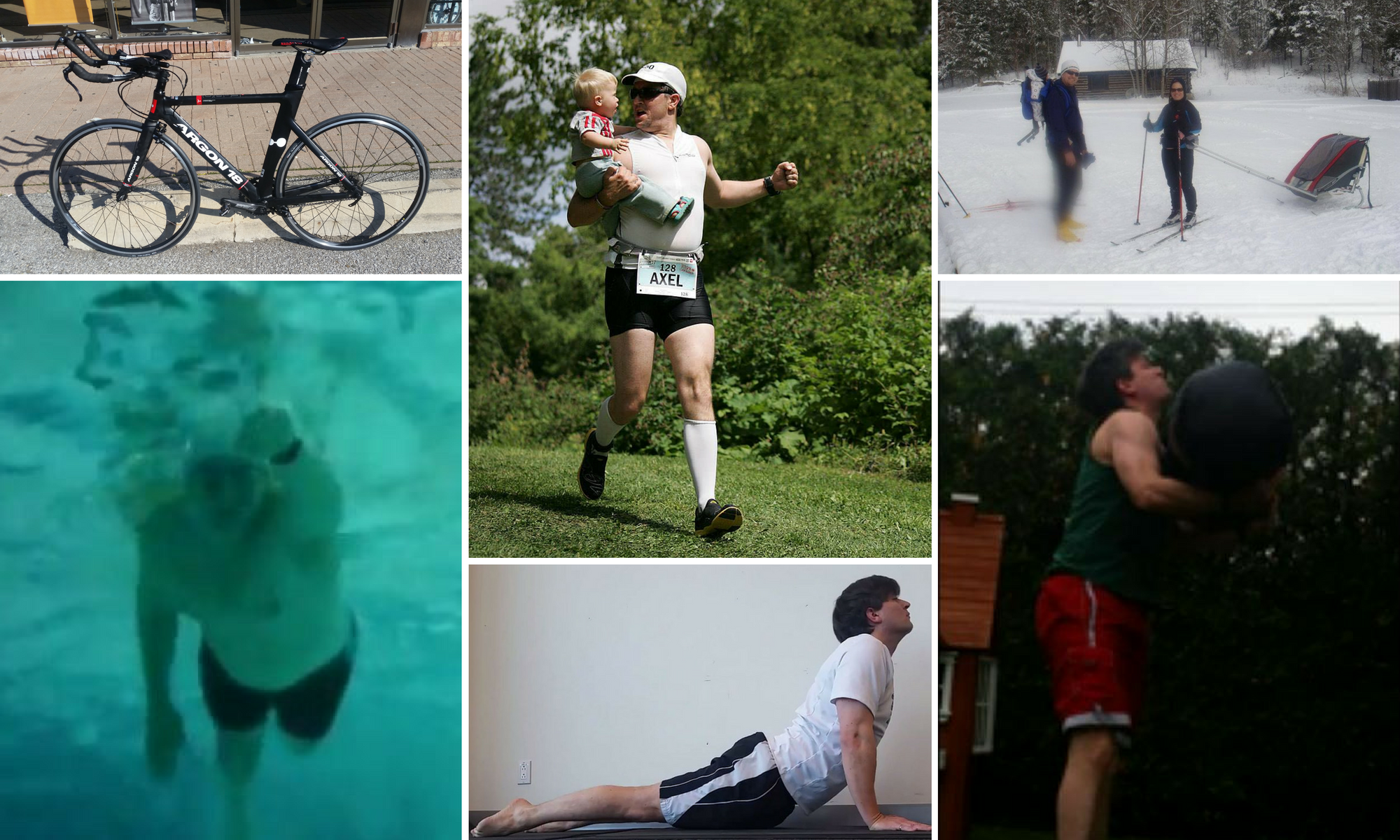Two deaths in the NYC triathlon made headlines at the same time that a study came to light: the overwhelming majority of deaths in triathlon occur in the swim portion.
The knee-jerk reaction has been to question whether race organizers are doing enough to screen participants for health issues and swimming proficiency.
I have my own take on the matter, but I want to give you some background that has influenced my line of thinking.
|
Name
|
Swim
|
Bike
|
Run
|
|
Super Sprint
|
400m
|
10km
|
2.5km
|
|
Sprint
|
750m
|
20km
|
5km
|
|
Standard
|
1500m
|
40km
|
10km
|
|
Middle
|
2.5km
|
80km
|
20km
|
|
Long
|
4km
|
120km
|
30km
|
|
Ironman
|
3.8
|
180km
|
42km
|
|
Name
|
Time per leg
|
Swim
|
Bike
|
Run
|
|
Sprint
|
10 minutes
|
1 km
(0.6 mi) |
8.5 km
(5.3 mi) |
3.9 km
(2.4 mi) |
|
Olympic
|
28 minutes
|
2.7 km
(1.7 mi) |
22.4 km
(13.9 mi) |
10 km
(6.2 mi) |
|
Ironman
|
127 minutes
|
12 km
(7.5 mi) |
96.2 km
(59.8 mi) |
42.2 km
(26.2 mi) |
Now let’s look at some sample race distances around Ontario:
|
Name
|
Swim
|
Bike
|
Run
|
|
Milton Triathlon
|
750m
|
30km
|
7.5km
|
|
Orillia ‘Sprint’ Triathlon
|
750m
|
33km
|
7km
|
|
Goderich Triathlon
|
1km
|
42km
|
10km
|
Notice anything? Race directors are adding distance to those categories on the bike and run while keeping the swim short. Or, they keep the recommended bike and run distances while shortening the swim. And I don’t blame them either; they need participants, and by making the swim shorter, the race becomes more accessible. The main ideas of increasing the safety margin of the swim seem to be either swim proficiency testing or health testing of participants. One of the the casualties in the NYC triathlon was formerly a high-school varsity swimmer, with previous triathlon experience and only 40 years old. Certainly she had enough swim proficiency and training to complete the swim portion, and I doubt anything short of an EEG would have revealed health issues; the woman would have been observed to be in good shape by a doctor. So what would a swim test or doctor’s note really have accomplished in this case.
So here’s my idea: increase the length of the swim in most triathlons. Participants will either drop out (better yet, switch to duathlon), start taking swimming more seriously in their training to compensate. While monitoring a longer swim course with kayaks and lifeguards is a daunting proposition to the race organizer, this needs to be weighed against whatever additional measures are being proposed instead (proof of good health, open water swimming certification); what will those cost?
Swimming is a low impact, whole body exercise, and it behooves us as a society to develop it as much as possible; being a good swimmer might save your life or that of someone else. Furthermore, it’s cheap! It’s been pointed out that triathlon is expensive, and the biggest expense has to be the bike (plus helmet, shoes, shorts, jerseys, bottles, etc.). The longer the bike portion, the more the event favours the athlete with more money, and the more those who are using a simple road bike (or even a commuter/mountain bike) might feel an event isn’t for them since they’ll be too slow and it will take too long. A race that approaches the equilateral proportions might actually be both less risky and more accessible. Go figure.
Now, I’m not saying *any* change is absolutely necessary. I’m a big fan of the saying: ”Nothing is sometimes the right thing to do, and always a clever thing to say.” Statistically speaking, triathlons and endurance sports are not dangerous, and have probably saved more lives through promotion of exercise and healthy living than they have cost. Still, if change is desired, I’d prefer the sport to look at a simple modification to the race format than introducing extra levels of bureaucracy.
***UPDATE2: Death caused by cardiac arrhythmia due to prolapsed mitrial valve.

